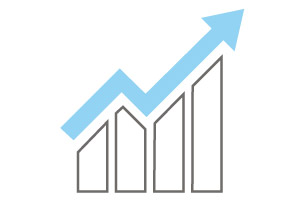Each week, we break down the latest U.S. economic reports, including what the results mean for the overall health of the economy. Here, you will find how economists’ forecasts compare with actual results, key takeaways to consider, as well as a list of what’s on tap for the week ahead.
News
Inflation Has Peaked
To be honest, I probably would not have used that headline a couple of weeks ago. Although I spent about a month putting together my talk for Commonwealth’s National Conference, which pretty much comes to that conclusion, I was not yet at a point where I would put that as the headline. Even as I rehearsed the night before, I was thinking about how I would handle the talk if the next morning’s data release—just hours before the talk itself—put inflation back up again. I couldn’t rewrite my presentation, as there wasn’t enough time (and besides, the art department was already upset with me).
Monthly Market Risk Update: November 2022 [SlideShare]
My colleague Sam Millette, manager, fixed income on Commonwealth’s Investment Management and Research team, helped me put together this month’s Market Risk Update. Thanks for the assist, Sam! Let’s take a closer look.
Economic Risk Factor Update: November 2022 [SlideShare]
My colleague Sam Millette, manager, fixed income on Commonwealth’s Investment Management and Research team, helped me put together this month’s Economic Risk Factor Update. Thanks for the assist, Sam! Let’s take a closer look.
Economic Release Snapshot: Consumer Sentiment Soured in November
Each week, we break down the latest U.S. economic reports, including what the results mean for the overall health of the economy. Here, you will find how economists’ forecasts compare with actual results, key takeaways to consider, as well as a list of what’s on tap for the week ahead.
Softer Inflation Numbers a Win for Economy
This will be another short post as I am giving a talk this morning on . . . wait for it . . . inflation! The whole thesis of the talk is that inflation is going to roll over shortly, for a bunch of reasons that I will describe in future posts. Or so I hope, anyway.









 Client Relationship Specialist
Client Relationship Specialist




 Ashley has been working in the customer service field since she started her first job at age 16. For the past ten years she worked in an office setting handling accounts payable and receivable as well as some receptionist work. She is very excited to learn more about the investment field.
Ashley has been working in the customer service field since she started her first job at age 16. For the past ten years she worked in an office setting handling accounts payable and receivable as well as some receptionist work. She is very excited to learn more about the investment field. Client Relationship Specialist II
Client Relationship Specialist II Vice President of Operations and Integrator
Vice President of Operations and Integrator Wealth Advisor
Wealth Advisor Senior Client Relationship Specialist
Senior Client Relationship Specialist Senior Wealth Advisor
Senior Wealth Advisor Wealth Advisor | Director of Business Development
Wealth Advisor | Director of Business Development Wealth Advisor
Wealth Advisor Senior Wealth Advisor / Registered Principal
Senior Wealth Advisor / Registered Principal Senior Wealth Advisor / Registered Principal
Senior Wealth Advisor / Registered Principal